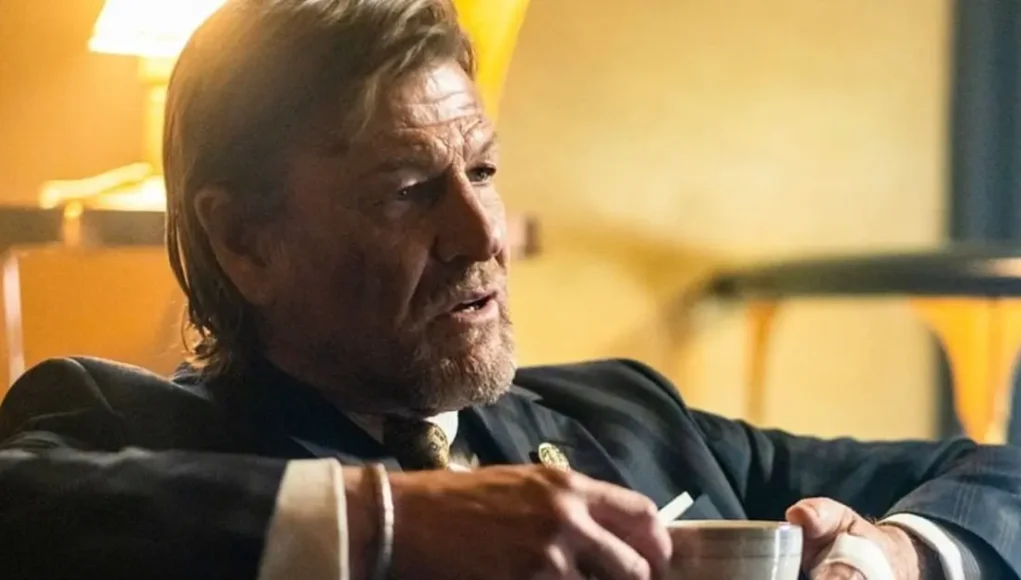The Snowpiercer saga reaches the end of the line in dramatic fashion
“Snowpiercer,” the TV series adaptation of Bong Joon-ho’s 2013 film, has reached its final stop after four seasons, leaving an indelible mark on dystopian storytelling. With a stellar cast led by Daveed Diggs, Jennifer Connelly, and Sean Bean, the show consistently engaged audiences with its thought-provoking exploration of class, survival, and rebellion aboard a perpetually moving train. Despite facing some challenges along the way, “Snowpiercer” ultimately delivers a memorable and satisfying conclusion that remains true to its core themes and characters.
From the outset, “Snowpiercer” sets itself apart with a unique premise: the remnants of humanity, trapped on a massive train, endlessly circle the globe in a frozen, post-apocalyptic world. The train itself is divided by strict class hierarchies, with the rich living in luxury at the front and the poor toiling in squalor at the back. This setup provides a fertile ground for the show to explore social inequality, power struggles, and the lengths people will go to in order to survive.
The first season is a strong start, balancing tense action with character development and world-building. Daveed Diggs shines as Layton, a former detective from the back of the train who becomes the reluctant leader of a rebellion. His performance is layered and compelling, showcasing Layton’s internal conflict as he grapples with the moral compromises necessary to lead a revolution. Jennifer Connelly is equally captivating as Melanie Cavill, the voice of the train’s upper class, who hides deep secrets about the train’s operation and her role in its creation. Their opposing ideologies and eventual clashes provide much of the show’s initial tension, keeping viewers hooked from episode to episode.
One of the show’s greatest strengths throughout its run is the ensemble cast. The writers give each character, regardless of their social status on the train, a chance to shine and develop. This dedication to fleshing out even secondary characters adds emotional depth to the series, making the stakes of the revolution feel real and urgent. In particular, Alison Wright as Ruth Wardell delivers an outstanding performance, portraying her character’s journey from loyal servant of the elite to a key figure in the resistance with nuance and vulnerability.
The second season continues the momentum from the first, introducing new dynamics and even higher stakes. Sean Bean’s entrance as Mr. Wilford, the original mastermind behind the Snowpiercer project, adds a new layer of intrigue and danger. Bean’s portrayal of Wilford is delightfully menacing, and his power struggle with both Layton and Melanie drives much of the narrative tension. The show skillfully handles Wilford’s psychological manipulation, making him a villain who is both charismatic and terrifying. As the battle for control of the train intensifies, so does the exploration of the characters’ moral dilemmas and the cost of rebellion.
However, by the third and fourth seasons, the cracks in the show’s production begin to show. Budget constraints and network changes are evident, with certain episodes feeling less polished than the earlier seasons. Some plotlines become more convoluted, and the pacing occasionally falters. Yet, even in its weaker moments, “Snowpiercer” maintains a level of quality that keeps viewers invested. This is largely due to the continued commitment of the cast and writers, who clearly have a passion for the story they are telling.
Despite these challenges, the fourth season successfully brings the series to a close in a way that is both emotionally satisfying and true to the characters. Unlike many long-running series that succumb to fan service or predictable endings, “Snowpiercer” refuses to take the easy way out. The final episodes are filled with tension and surprises, as the characters are forced to make difficult decisions that will determine the future of humanity. Without giving too much away, the resolution is fitting, providing closure to the main arcs while still leaving room for interpretation.
The show’s ending is not about giving audiences exactly what they expect, but rather staying true to the characters’ journeys and the overarching themes of survival and sacrifice. Layton’s arc, in particular, is handled with care, as he grapples with the burden of leadership and the consequences of his choices. The final scenes resonate deeply because they feel earned—everything the characters have gone through leads naturally to this point.
In addition to its storytelling, “Snowpiercer” has always excelled in creating a visually striking and atmospheric world. The train itself, with its distinct cars and claustrophobic corridors, is a character in its own right. The show’s production design is consistently impressive, even when budget limitations become apparent in the later seasons. The stark contrast between the opulence of the front cars and the grim reality of the tail is a constant reminder of the show’s commentary on class division. The visual effects, though not always perfect, do an admirable job of bringing the frozen wasteland outside the train to life, adding to the sense of isolation and desperation that permeates the series.
Overall, “Snowpiercer” is a show that, despite its ups and downs, delivers on its promise of a gripping, dystopian tale with complex characters and thought-provoking themes. Its ability to maintain tension and intrigue over four seasons is a testament to the talent of the cast and crew. While the journey may not have been perfect, the destination is more than worth it. Fans of the series will undoubtedly feel that the time spent aboard this train was a ride well worth taking.
In the end, “Snowpiercer” does what all great sci-fi should do: it reflects our world through the lens of a speculative future, challenging us to think about issues like inequality, power, and what it means to be human. As the train finally comes to a halt, we are left with a story that will linger long after the credits roll.
Ed’s Score: 9/10






